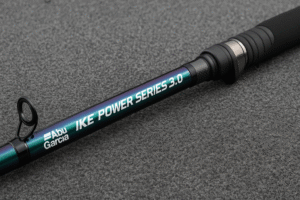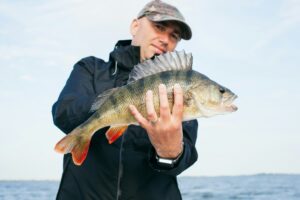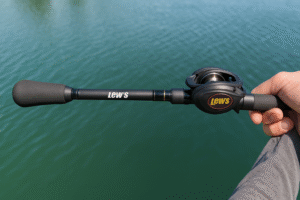Best Ways to Catch Deep Water Bass
Fishing for bass in deep water remains one of the most overlooked and misunderstood challenges in angling.
While many anglers focus on visible targets like docks or weed beds, the true giants often lurk in the invisible world of deep structure and cover.
This guide merges proven strategies from seasoned fishermen to simplify the process of locating and catching bass in water deeper than 10 feet—sometimes as deep as 80 feet. Let’s dive into the essentials, stripped of complexity and jargon, to help you unlock these hidden honey holes.
Understanding Structure and Cover: The Bass Highway System
To consistently catch deep-water bass, you must first grasp two critical concepts: structure and cover. Structure refers to the physical contours of the lake bottom—humps, ledges, drop-offs, or creek channels.
These act as highways for bass, guiding their seasonal migrations between shallow spawning areas and deep wintering zones. Cover, on the other hand, includes objects like rocks, brush piles, or submerged trees that bass use for shelter or ambush points. Think of cover as the rest stops or restaurants along those highways.
The magic happens where structure and cover intersect. A rocky ledge (structure) with a submerged brush pile (cover) or a creek channel bend (structure) littered with stumps (cover) are prime examples. These “sweet spots” concentrate fish by offering both a migration route and a place to feed or hide.
Seasonal Bass Movements: Follow the Fish
Bass behavior is tied to water temperature and seasonal cycles. Their movements follow a predictable pattern:
In winter, bass retreat to the deepest parts of the lake, often near vertical breaks or main lake channels where water temperatures stabilize.
As spring approaches, they migrate toward shallow spawning flats, using main lake points, creek channels, or ledges as their highways. During the spawn, they’ll linger in shallow water to guard nests.
After spawning, bass move back to deeper water in summer, often suspending along main lake structures like ledges or channel edges. In fall, they return to shallow areas to feed aggressively before winter, using the same migration routes.
The key is identifying transition zones—places where structure changes abruptly. For example, a sharp bend in a creek channel, a point that drops into deep water, or a hump near a submerged roadbed. These areas act as pit stops where bass pause during their migrations.
Successful deep-water fishing starts long before you launch your boat. Contour maps are your roadmap to locating bass highways. Begin by marking critical zones:
Wintering areas (deep vertical breaks) can be circled in blue. Main migration routes like creek channels or ledges are marked in black. Secondary points or humps that connect shallow and deep zones get a red highlight. Spawning flats are shaded green.
Cross-referencing multiple maps is crucial, as no single map is perfect. For instance, Lake Champlain’s winning spots often lie where a main lake point meets a steep drop into 30+ feet, while Lake Toho’s bass stack near creek channel intersections close to spawning flats.
On the Water: Fine-Tuning Your Plan
Once you’re on the lake, put your map work to the test. Start by idling in a zig-zag pattern over your marked areas while monitoring your electronics. Look for baitfish (appearing as dense clouds), cover like brush piles (jagged marks on the sonar), or changes in bottom composition (hard bottoms show as thin sonar lines; soft bottoms are thicker). When you find a promising spot, drop a buoy and use your GPS to mark coordinates. Note details like depth, water temperature, and nearby landmarks—a red cliff face or a lone standing tree can help you relocate the spot later.
Techniques for Deep-Water Success:
Drop Shotting
Drop shotting shines in clear, heavily pressured lakes. Rig a 3/8 oz weight 12–18 inches below a finesse worm or minnow imitation. Position your boat directly over marked fish and cast slightly ahead of them. Slowly drag the bait into their zone, keeping it suspended just above the bottom. In summer, focus on depths just above the thermocline—a layer where water temperature drops sharply. Bass often stack here to conserve energy.
Shaky Head Jigs
When bass are finicky, a shaky head jig tipped with a soft plastic worm can be deadly. Cast near brush or rocks and let the jig sink. Use subtle rod lifts to make the bait shimmy on the fall, then let it sit motionless for 5–10 seconds. Neutral bass often strike during these pauses.
Carolina Rigging
This search tactic excels in scattered cover like stumps or bridge pilings. Use a 1 oz weight with a 3-foot leader and a floating soft plastic bait. Cast past your target and drag the rig slowly, maintaining bottom contact. The weight bumps along the bottom while the bait trails naturally, mimicking a foraging prey.
Deep Cranking
For active bass chasing baitfish, a deep-diving crankbait is ideal. Choose a lure that reaches the target depth (check the packaging) and cast beyond the structure. Use a steady retrieve to keep the bait digging into the bottom, triggering reaction strikes. In murky water, opt for bright colors; in clear water, natural shad patterns work best.
Pro Tips for Consistency:
Watch the Thermocline: In summer, bass often hover just above this temperature barrier. Adjust your depth to match.
Bottom Composition Matters: Hard bottoms (rock, gravel) attract more bass than soft mud. Use your depthfinder’s gain settings to identify these areas.
Weather Dictates Depth: On bright, calm days, bass tighten to cover and go deeper. On cloudy, windy days, they roam shallower and chase bait.
Take Notes: Record GPS coordinates, depth, lure choices, and weather conditions. Over time, patterns emerge—the same spots produce year after year.
Deep-water bass fishing isn’t about luck—it’s about preparation and understanding the underwater landscape. Study your maps, learn the seasonal highways, and practice precision with your techniques. The fish are there; it’s your job to decode their world. With patience and persistence, you’ll unlock the secrets of the depths and land bass others never see. Tight lines!





